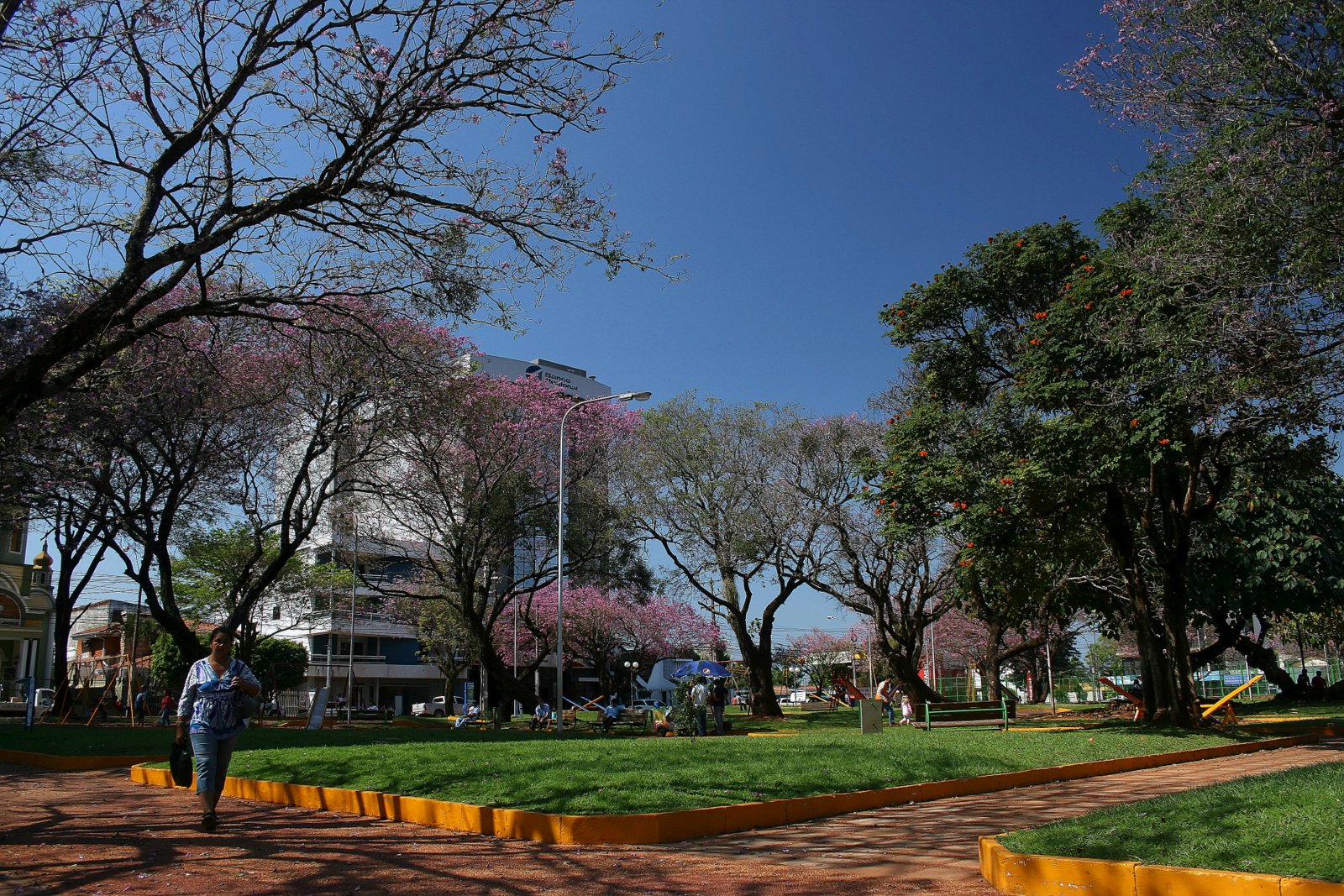|
Fram, Paraguay
Fram (or Colonia Fram) is a city & one of the 30 districts in the Itapúa Department of Paraguay. History Fram was founded on March 20, 1927, by Norwegians, Norwegian Pedro Cristophensen, along with Mateo Sanchez, a native of Carmen del Paraná. The old name of the place was ''Apereá''. The residents of Fram are of Slavic origin (Polish people, Poles, Russians and Ukrainians), Germans, German and Japanese people, Japanese. Toponymy Fram is a Norwegian language, Norwegian word meaning "Forward" and is the name of the famous ship that brought the Norwegian explorer Fridtjof Nansen and his crew to the Arctic ice in 1893. Fram also is known as "The Capital of Wheat", a nickname earned by being an area of wheat production, since its founding. Demography According to the ''Dirección General de Estadísticas, Encuestas y Censos'' the district has a total population of 6,923 inhabitants, of which 3.414 live in its urban area. Location The city of Fram is situated 46 km north-wes ... [...More Info...] [...Related Items...] OR: [Wikipedia] [Google] [Baidu] |
Paraguay
Paraguay (; ), officially the Republic of Paraguay ( es, República del Paraguay, links=no; gn, Tavakuairetã Paraguái, links=si), is a landlocked country in South America. It is bordered by Argentina to the south and southwest, Brazil to the east and northeast, and Bolivia to the northwest. It has a population of seven million, nearly three million of whom live in the capital and largest city of Asunción, and its surrounding metro. Although one of only two landlocked countries in South America (Bolivia is the other), Paraguay has ports on the Paraguay and Paraná rivers that give exit to the Atlantic Ocean, through the Paraná-Paraguay Waterway. Spanish conquistadores arrived in 1524, and in 1537, they established the city of Asunción, the first capital of the Governorate of the Río de la Plata. During the 17th century, Paraguay was the center of Jesuit missions, where the native Guaraní people were converted to Christianity and introduced to European culture. ... [...More Info...] [...Related Items...] OR: [Wikipedia] [Google] [Baidu] |
Japanese People
The are an East Asian ethnic group native to the Japanese archipelago."人類学上は,旧石器時代あるいは縄文時代以来,現在の北海道〜沖縄諸島(南西諸島)に住んだ集団を祖先にもつ人々。" () Japanese people constitute 97.9% of the population of the country of Japan. Worldwide, approximately 129 million people are of Japanese descent; of these, approximately 122.5 million are residents of Japan. People of Japanese ancestry who live outside Japan are referred to as , the Japanese diaspora. Depending on the context, the term may be limited or not to mainland Japanese people, specifically the Yamato (as opposed to Ryukyuan and Ainu people). Japanese people are one of the largest ethnic groups in the world. In recent decades, there has also been an increase in the number of multiracial people with both Japanese and non-Japanese roots, including half Japanese people. History Theories of origins Archaeological evidence indi ... [...More Info...] [...Related Items...] OR: [Wikipedia] [Google] [Baidu] |
Districts Of Itapúa Department
A district is a type of administrative division that, in some countries, is managed by the local government. Across the world, areas known as "districts" vary greatly in size, spanning regions or counties, several municipalities, subdivisions of municipalities, school district, or political district. By country/region Afghanistan In Afghanistan, a district (Persian ps, ولسوالۍ ) is a subdivision of a province. There are almost 400 districts in the country. Australia Electoral districts are used in state elections. Districts were also used in several states as cadastral units for land titles. Some were used as squatting districts. New South Wales had several different types of districts used in the 21st century. Austria In Austria, the word is used with different meanings in three different contexts: * Some of the tasks of the administrative branch of the national and regional governments are fulfilled by the 95 district administrative offices (). The area a dis ... [...More Info...] [...Related Items...] OR: [Wikipedia] [Google] [Baidu] |
Immigration To Paraguay
Historically, the migratory history of Paraguay has been ambiguous, since it has had periods of large scale emigration as well as large waves of immigrants, primarily from Europe. Ethnically, Paraguay is considered itself as a white and '' mestizo'' country, the result of intermarriage between Amerindians (mainly Guaraní) and Europeans (mostly of Spanish origin). Unlike neighbouring countries like Argentina or Brazil, Paraguay did not attract massive numbers of immigrants, but this does not imply that it has not been a recipient thereof. However, during the 19th century the country suffered a devastating war that greatly reduced its population, having to rise from the ashes and repopulate their territory with the help of immigrants. During the 20th century, Paraguay became a recipient of immigrants, especially Europeans fleeing wars occurring in the Old World, in search of a better life quality and peace. Among European groups in the country, this includes those of Spanish, Germ ... [...More Info...] [...Related Items...] OR: [Wikipedia] [Google] [Baidu] |
Eastern Orthodox Church
The Eastern Orthodox Church, also called the Orthodox Church, is the second-largest Christian church, with approximately 220 million baptized members. It operates as a communion of autocephalous churches, each governed by its bishops via local synods. The church has no central doctrinal or governmental authority analogous to the head of the Roman Catholic Church—the Pope—but the Ecumenical Patriarch of Constantinople is recognized by them as '' primus inter pares'' ("first among equals"), which may be explained as a representative of the church. As one of the oldest surviving religious institutions in the world, the Eastern Orthodox Church has played a prominent role in the history and culture of Eastern and Southeastern Europe. The Eastern Orthodox Church officially calls itself the Orthodox Catholic Church. Eastern Orthodox theology is based on holy tradition, which incorporates the dogmatic decrees of the seven ecumenical councils, the Scriptures, and the teachin ... [...More Info...] [...Related Items...] OR: [Wikipedia] [Google] [Baidu] |
Social Insurance
Social insurance is a form of Social protection, social welfare that provides insurance against economic risks. The insurance may be provided publicly or through the subsidizing of private insurance. In contrast to other forms of Welfare, social assistance, individuals' claims are partly dependent on their contributions, which can be considered insurance premiums to create a common fund out of which the individuals are then paid benefits in the future. Types of social insurance include: * Universal health care, Public health insurance * Social Security (United States), Social Security * Unemployment Insurance, Public Unemployment Insurance * Public auto insurance * Parental leave, Universal parental leave Features * The contributions of individuals is nominal and never goes beyond what they can afford * the Social welfare, benefits, eligibility requirements and other aspects of the program are defined by statute; * explicit provision is made to account for the income and exp ... [...More Info...] [...Related Items...] OR: [Wikipedia] [Google] [Baidu] |
Capitán Miranda
Capitán Miranda is a town in the Itapúa Department of Paraguay Paraguay (; ), officially the Republic of Paraguay ( es, República del Paraguay, links=no; gn, Tavakuairetã Paraguái, links=si), is a landlocked country in South America. It is bordered by Argentina to the south and southwest, Brazil to th .... Sources World Gazeteer: Paraguay– World-Gazetteer.com {{DEFAULTSORT:Capitan Miranda Districts of Itapúa Department ... [...More Info...] [...Related Items...] OR: [Wikipedia] [Google] [Baidu] |
Coronel Bogado
Coronel Bogado District is a town and district in the Itapúa Department of Paraguay Paraguay (; ), officially the Republic of Paraguay ( es, República del Paraguay, links=no; gn, Tavakuairetã Paraguái, links=si), is a landlocked country in South America. It is bordered by Argentina to the south and southwest, Brazil to th .... Sources World Gazeteer: Paraguay– World-Gazetteer.com {{Authority control Districts of Itapúa Department ... [...More Info...] [...Related Items...] OR: [Wikipedia] [Google] [Baidu] |
Encarnación, Paraguay
Encarnación () is a district and the capital city of Itapúa Department in Paraguay, located at the south-east of the department, on the right-hand (western) shore of the Paraná River, opposite Posadas, Argentina. The city has an area of 274 km2 and a population of 93,497 (2002 Census), and the Greater Encarnacion area has a population of over 220,000 according to a 2020 estimate. Encarnación is the third-largest city of Paraguay. The city was originally named ''Nuestra Señora de la Anunciación de Itapúa'', and is considered the capital of summer by most of its inhabitants. Encarnación is connected to the Argentine city of Posadas by the San Roque González de Santa Cruz Bridge and the International Train. The city is located on Route 1, some 370 km (225 miles) from Asunción, and located on Route 6, some 280 km (175 miles) from Ciudad del Este. Due to its proximity, many Argentines travel to the city. The city is an important financing centre of Pa ... [...More Info...] [...Related Items...] OR: [Wikipedia] [Google] [Baidu] |
Norwegian Language
Norwegian ( no, norsk, links=no ) is a North Germanic language spoken mainly in Norway, where it is an official language. Along with Swedish and Danish, Norwegian forms a dialect continuum of more or less mutually intelligible local and regional varieties; some Norwegian and Swedish dialects, in particular, are very close. These Scandinavian languages, together with Faroese and Icelandic as well as some extinct languages, constitute the North Germanic languages. Faroese and Icelandic are not mutually intelligible with Norwegian in their spoken form because continental Scandinavian has diverged from them. While the two Germanic languages with the greatest numbers of speakers, English and German, have close similarities with Norwegian, neither is mutually intelligible with it. Norwegian is a descendant of Old Norse, the common language of the Germanic peoples living in Scandinavia during the Viking Age. Today there are two official forms of ''written'' Norwegian, (literally ... [...More Info...] [...Related Items...] OR: [Wikipedia] [Google] [Baidu] |
Germans
, native_name_lang = de , region1 = , pop1 = 72,650,269 , region2 = , pop2 = 534,000 , region3 = , pop3 = 157,000 3,322,405 , region4 = , pop4 = 21,000 3,000,000 , region5 = , pop5 = 125,000 982,226 , region6 = , pop6 = 900,000 , region7 = , pop7 = 142,000 840,000 , region8 = , pop8 = 9,000 500,000 , region9 = , pop9 = 357,000 , region10 = , pop10 = 310,000 , region11 = , pop11 = 36,000 250,000 , region12 = , pop12 = 25,000 200,000 , region13 = , pop13 = 233,000 , region14 = , pop14 = 211,000 , region15 = , pop15 = 203,000 , region16 = , pop16 = 201,000 , region17 = , pop17 = 101,000 148,00 ... [...More Info...] [...Related Items...] OR: [Wikipedia] [Google] [Baidu] |
Departments Of Paraguay
Paraguay consists of 17 departments ( es, departamentos; singular – ''departamento)'' and one capital district (''distrito capital''). The country is divided into two regions: The "Occidental Region" or Chaco (Boquerón, Alto Paraguay and Presidente Hayes), and the "Oriental Region" or Parana (other departments and the capital district). See also *Ranked list of Paraguayan departments Population figures from the 2021 statistics by the INE, the National Statistics Institute. By population By area By density This is a list of regions of Paraguay by Human Development Index as of 2017. References {{Subnational entities ... * List of regions of Paraguay by Human Development Index * ISO 3166-2:PY External links * {{Paraguay topics Subdivisions of Paraguay Paraguay, Departments Departments, Paraguay Paraguay geography-related lists ... [...More Info...] [...Related Items...] OR: [Wikipedia] [Google] [Baidu] |



